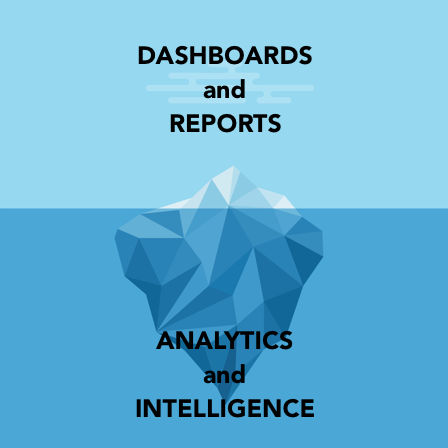It’s new. It’s exciting. It’s CONFUSING. It’s Business Intelligence & Analytics – two “newer” options that are both proven to help business leaders:
- make more confident decisions.
- lead change more effectively.
- best prepare for future challenges and opportunities.
Sounds fantastic – right?
So what’s the problem?
The Struggle Is Real
Most business leaders have no idea what business intelligence is or the dramatic impact it can have on their ability to drive bottom-line results and growth.
Many business leaders have heard about business analytics and some are even using analytics to discover root causes, find the greatest cost savings opportunities, or boost sales.
Most business leaders are collecting data (at some level) but their activity stops there. And this is the real problem. You have TONS of information and insights hidden away IN YOUR EXISTING DATA.
It’s Not Vudu or Witchcraft, It’s Math
We use science to better understand what has happened, what is currently happening, and what is likely to happen in the future. This is generally how things are done in many fields – history, space exploration, medical research and development, oil and gas recovery – any “sciency” field.
It only becomes new and somewhat strange when we start applying the mechanics of science to the softer, more-gut-feeling world of business. Can you really capture the art of doing business in an equation? Can my customer’s behaviour accurately be predicted by a formula?
YES! YES! YES! This type of deep understanding of what’s driving your business is exactly what business intelligence and analytics brings to the table.
Your Secret Weapon for Winning
Imagine Having The Fastest Thinking, Smartest-Person-In-The Room On Your Team – ALL THE TIME… That’s the power you’ll experience when you introduce analytics and intelligence into your business leadership practice.
Business Analytics is what happens when you begin to look for patterns in your data and use those patterns to improve or drive change. There are many different analytical tools and approaches depending on what you want to learn – just like there are many different tools you can use for effectively managing people, improving operations, or growing your business. The tools aren’t nearly as important as the results!
Example: An 80/20 Pareto Analysis is a fantastic problem-solving tool that helps leaders prioritize decisions by identifying the 20% of causes that are creating 80% of your problems. Need to identify and eliminate your major sources of downtime, or understand what’s driving your margins, or define your most profitable customers? Use an 80/20 to get the job done.
Business Intelligence is not only the name of an industry space, it’s also what happens when you begin to weave data into everything you do. When you’re leveraging dashboards to empower workers, running 80/20s to drive improvements and profitability, and you’re optimizing labor costs based on demand cycles – you’re getting your business intelligence on.
Example: One company leveraged analytics to optimize their existing operations and increase sales. They used predictive analytics to anticipate some big changes coming in their marketplace. Fully armed, their executives were able to take actions that moved them from number three to number one in their market. These are the kinds of dramatic changes that can happen when you’re able to fully leverage business intelligence.
Call it what you want – business intelligence, business analytics, or “that data stuff.” It doesn’t really matter what you call it so long as you’re using it to super-charge your thinking and results.
We’ve spent the last six years building one of the best mid-market Business Intelligence & Analytics teams in the country. We stand at the ready to help you turn your data into information, that information into insights, and those insights into action that grow your bottom line.
What’s Next??
Meet our team and explore some of the results we’ve helped local leaders achieve.
Schedule a meeting with Bobby or Geoff to explore how you can get more out of your data.







